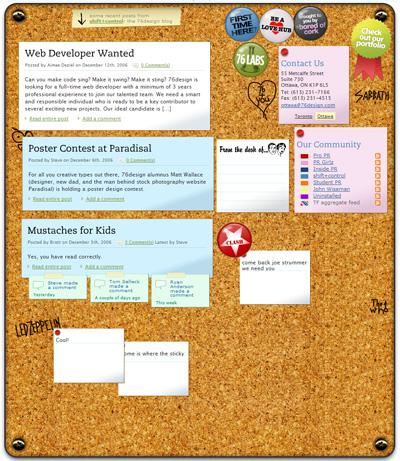![]()
You may notice that ProPR looks different today. For the first time in five years, ProPR has had a redesign of its look and function.
So, what’s different about this design?
First, I hope that the look and feel is cleaner. The old design was heavily stylized with dark borders and broad swatches of color. This design has a more open, light and accessible feel. I hope it scales better on a variety of monitor sizes and that the design doesn’t distract from the content. Does it look good on your screen?
Second, the comments are now powered by Disqus. The old design used the BackType plug-in for WordPress, which was shut down a couple weeks ago, we knew we had to make a change. And after looking at the alternatives, discuss seem to me to be the best of breed in common management. What do you think of the way that the comments work and are presented in this design?
Third, sharing and bookmarking the content is front and center in the new design. You’ll see the Tweet and Facebook Like buttons prominently displayed at the bottom of each post, along with a general Share button and the Evernote Clip button. I think that this reflects the evolution of social networking and puts the most frequently used sharing functions in a place where they can easily be spotted and used. What do you think could this layout?
Fourth,we’ve added simple navigation to the top right corner, with tabs for About, Speaking and Contact pages. This enables me to post more complete biographical information on the About page and details about my future speaking engagements on the Speaking page. The Contact page includes a form to contact me in place of publishing my email address. A small gesture against spammers.
Finally, the sidebar has been cleaned up and reordered. We retired the Friendsroll and TopLinks plug-ins that I had used on the old design. These were developed by my colleagues at 76design at a time when blog rolls were still widely used. Those days have passed and after three years of service, Friendsroll and TopLinks have been removed. Prominent elements that remain on the sidebar include subscription by e-mail and RSS, my Twitter feed, the PostRank top posts widget, as well as the post archive and categories. We’ve added a new list of future speaking events. And, for now, we’ve kept the “Our Community” widget that we developed to point to our other blogs. (I say “for now” because we’re making other changes to the architecture of our other blogs that may lead to a change in this widget. Stay tuned.)
I owe big thanks to the talented team at 76 design for this redesign, Laurence Smink, Shaun Scanlon, and especially Ben Watts. Ben put up with me poking around the administration panel and asking far too many questions. At the end of the day he exercised his good judgment and the results are before you.
What do you think of Pro PR’s new design? Is the information easy to find and read? Does everything work? Are there things that could still be improved?

 What does our new business look like? Well, its draws on a broader range of skills than have traditionally been associated with PR. Yes, we start with our established understanding of communication and design as an enabler. But we add to this an understanding of sociology, group dynamics and organizational design. An understanding of search engines and always-on mobile connections. And an ability to design Web applications to enable people to do the things we are imagining.
What does our new business look like? Well, its draws on a broader range of skills than have traditionally been associated with PR. Yes, we start with our established understanding of communication and design as an enabler. But we add to this an understanding of sociology, group dynamics and organizational design. An understanding of search engines and always-on mobile connections. And an ability to design Web applications to enable people to do the things we are imagining.

